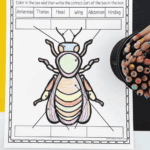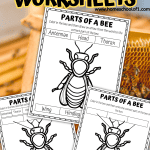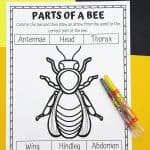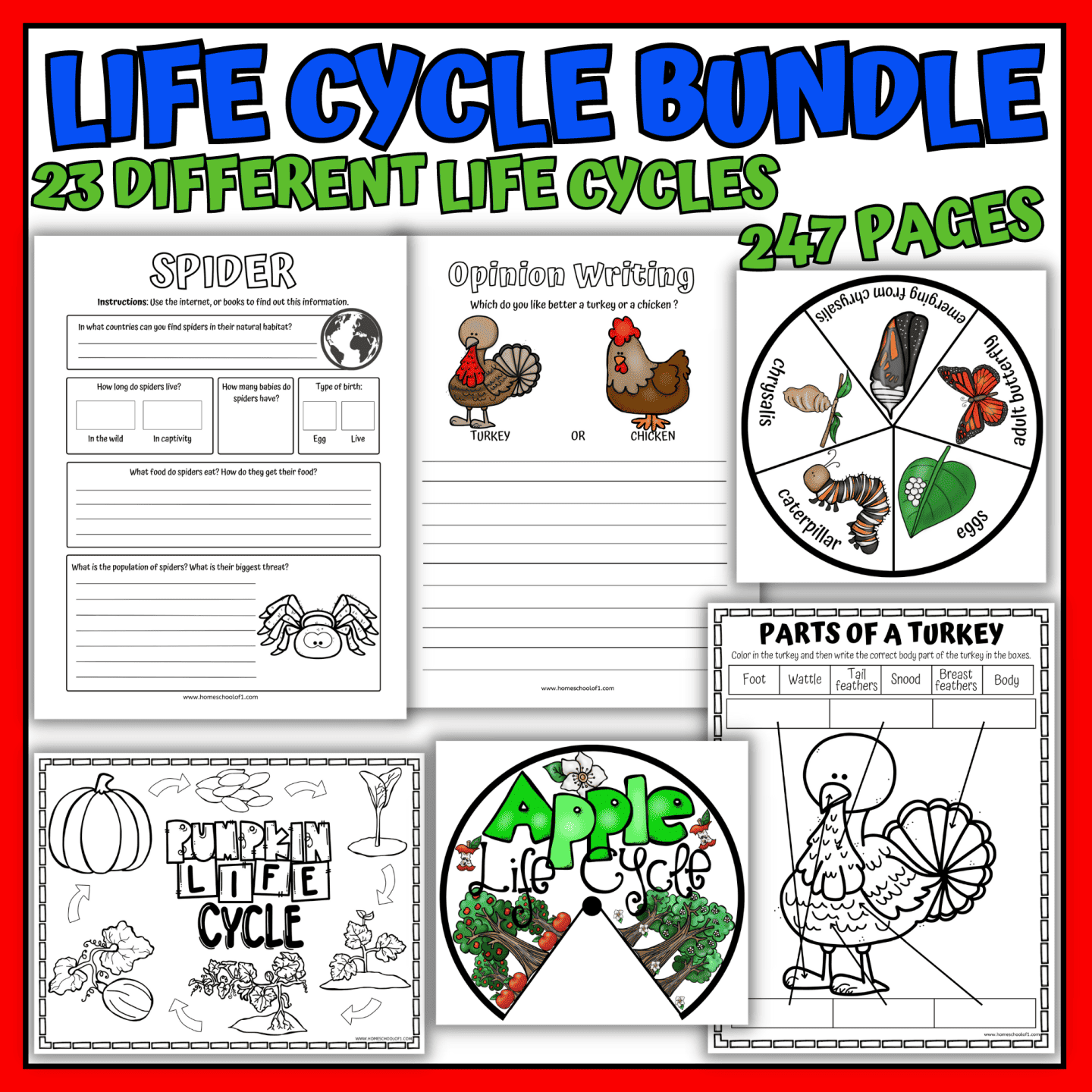Free Parts of a Bee Worksheet
Learning about insects has always been a favorite in our homeschool, and this parts of a bee worksheet made it easy to explore bee anatomy in a fun, hands-on way.
The anatomy labeling sheets focus on six key parts—head, thorax, abdomen, hindlegs, wings, and antennae—and include three versions for labeling, matching, and coloring.
Whether you’re studying pollinators or just want a simple science activity, this bee anatomy worksheet is a great fit.
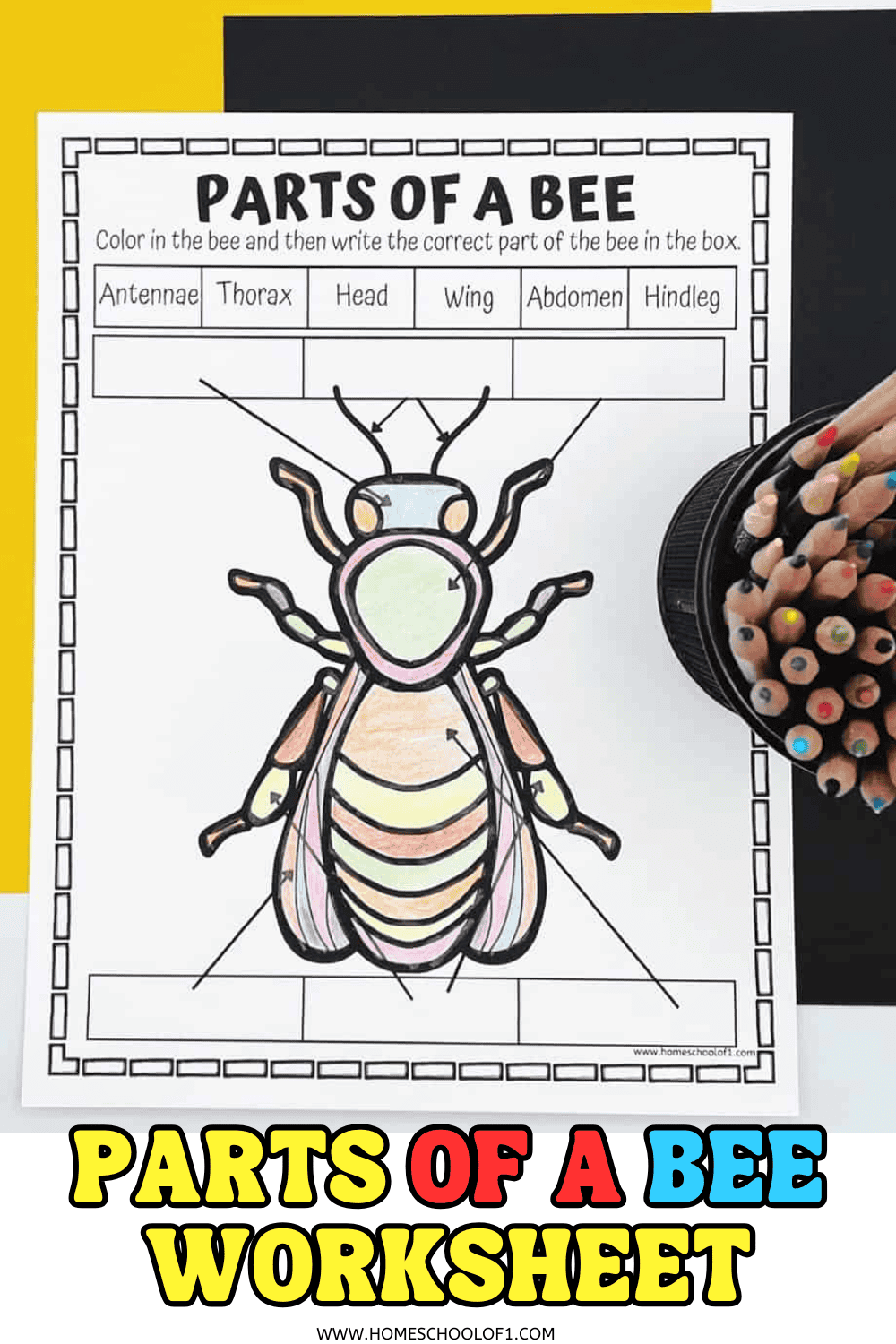
**This post may contain affiliate links. As an Amazon Associate and a participant in other affiliate programs, I earn a commission on qualifying purchases.**
Anatomy of a Bee Worksheet
This labeling the parts of a bee worksheet set includes three printable pages featuring the same black-and-white bee illustration.
One version asks kids to draw arrows to each body part, another includes arrows pointing to empty boxes, and the third provides a word bank to make labeling a bit easier.
Each page helps reinforce six important parts of a bee’s body:
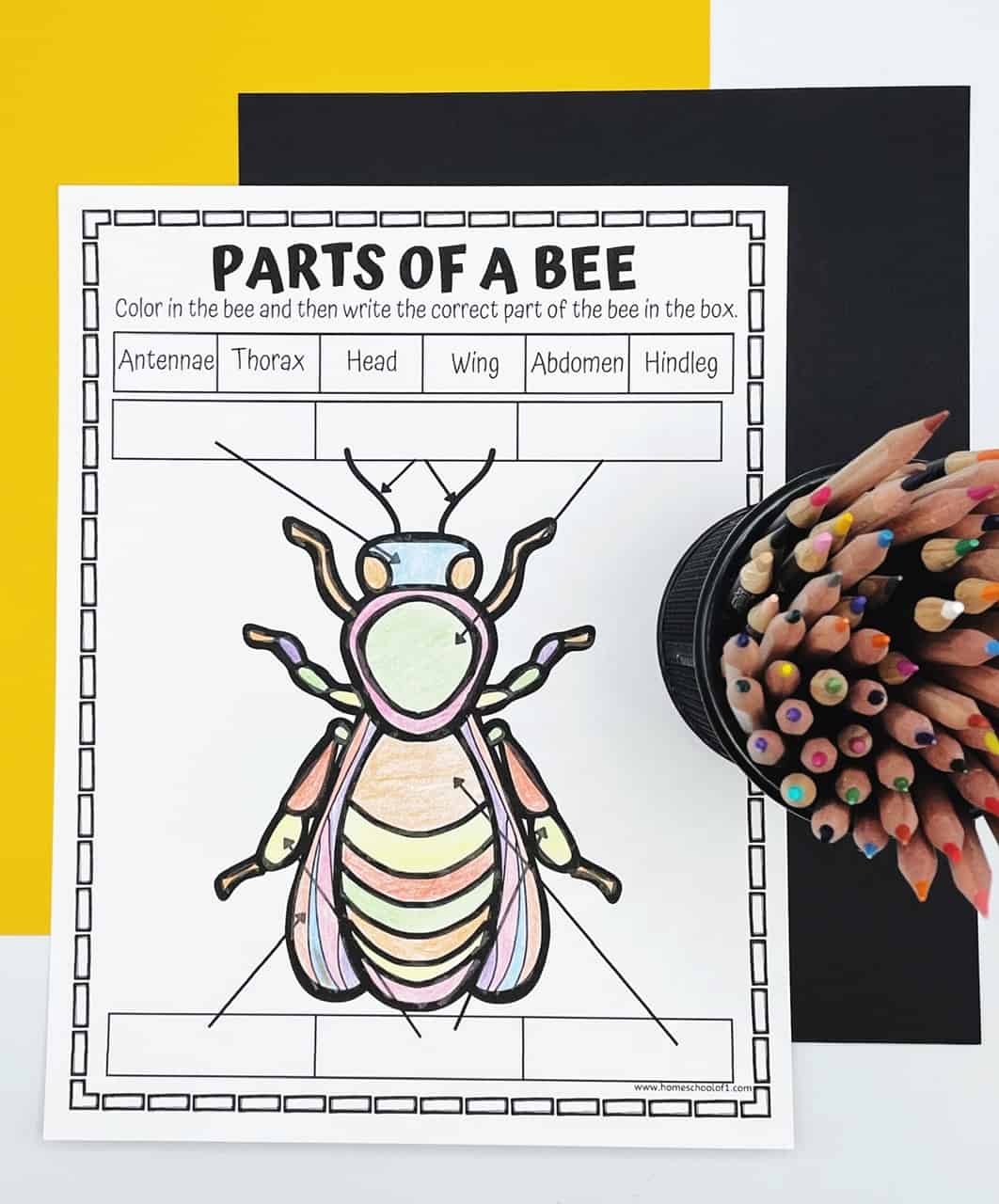
Head – The head holds the bee’s eyes, mouthparts, and antennae. It’s where most of their sensing and feeding happens.
Thorax – This is the bee’s powerhouse. It controls the wings and legs and is responsible for all movement, especially flight.
Abdomen – The abdomen holds key internal organs like the stinger, digestive system, and (in females) reproductive organs.
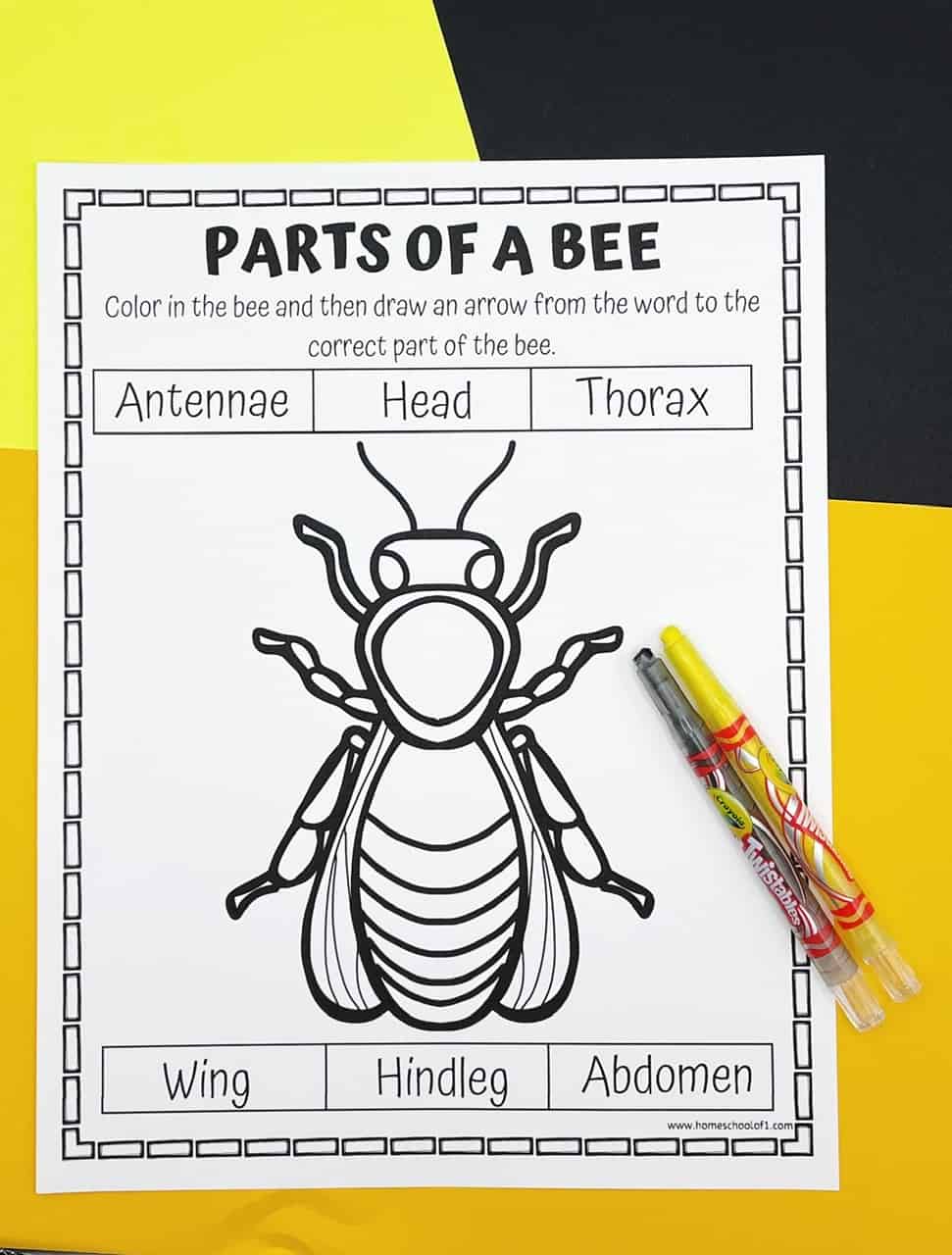
Wings – Bees have two pairs of wings that beat quickly to keep them airborne and create that familiar buzzing sound.
Hindlegs – Specialized for collecting pollen, the hindlegs have structures called pollen baskets to carry food back to the hive.
Antennae – These help bees detect smells, temperature, and vibrations—essential tools for foraging and navigating.
These worksheets are a fun and easy way for kids to practice labeling while learning about pollinators—and they can color the bee, too!
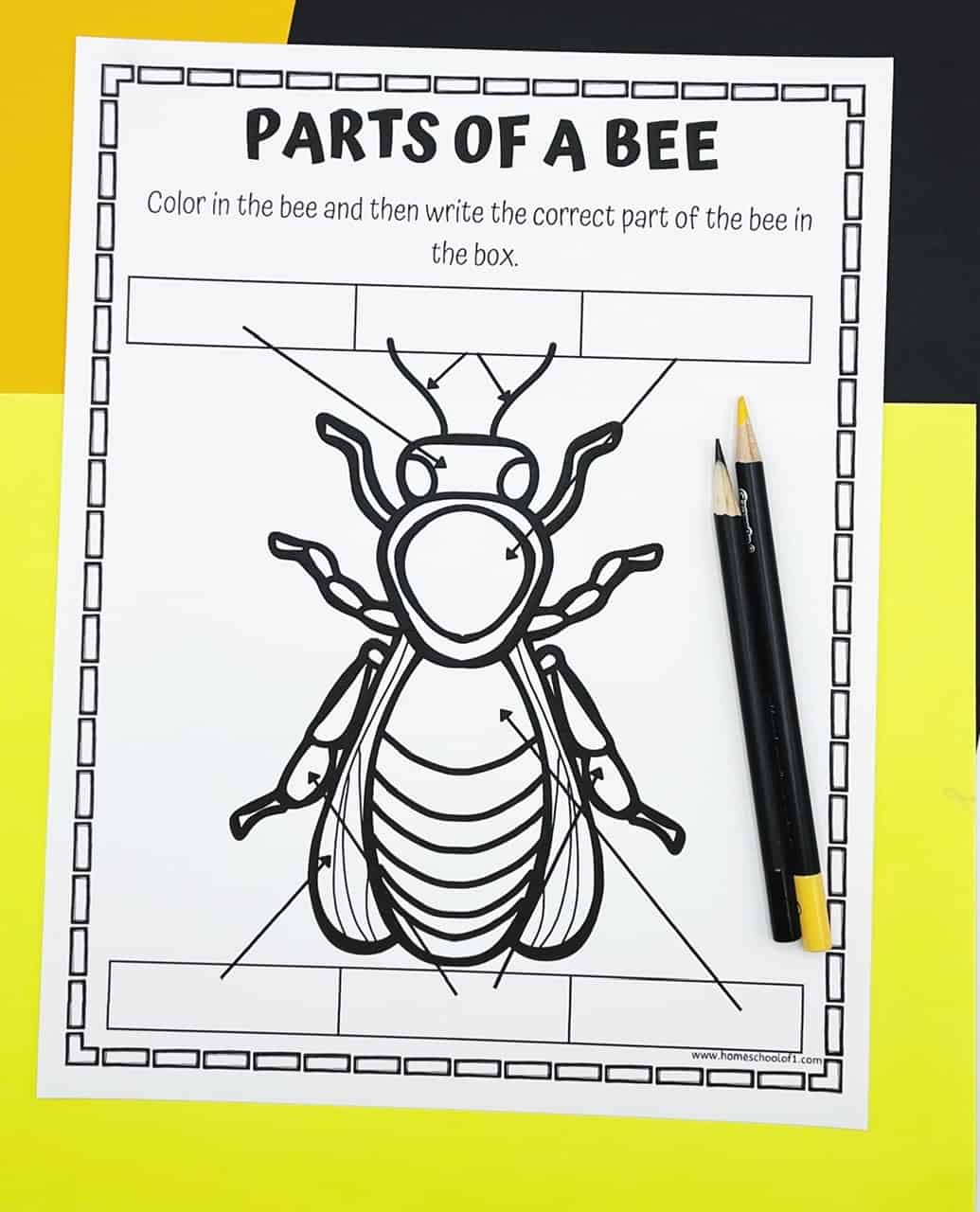
Books About Bees for Kids
If your kids are curious about bees after the worksheet, these are a few of our favorite bee books—they’ve all made repeat appearances at story time.
Give Bees a Chance. This one’s fun and lighthearted, but it sneaks in a lot of great facts. My son laughed at the illustrations but also came away with a better understanding of why bees matter. A great balance of humor and science.
The Bees in Your Backyard. A little more advanced, but perfect if your kids love flipping through pages packed with real photos. It’s not just for adults—older preschoolers and early elementary kids will enjoy exploring different bee species and learning about the plants that attract them.
Please Please the Bees. This story is a sweet way to introduce younger kids to the idea of caring for bees. Benedict the bear’s journey from grumpy to grateful sparked a great conversation at our house about where our honey (and food!) comes from.
Free Bee-Themed Printables
If your kids are still buzzing with questions, keep the learning going with these insect worksheets that pair perfectly with the parts of a bee worksheet.
Start with a life cycle of a bee worksheet to help kids understand how a bee grows from egg to adult. It’s a great follow-up activity that connects anatomy to real-life development.
Our B is for bee handprint craft is a fun way to reinforce the letter B while giving kids a creative break—perfect for preschool or early kindergarten.
For something a little more artistic, try the honey bee life cycle coloring page. It’s simple, visual, and ideal for younger learners who enjoy coloring while learning new concepts.
Grab the Free Bee Labeling Worksheet Here!
If you are running short on time you can download all of our life cycle worksheets. There are 247 pages over 23 different life cycles.
Ready to grab your free printable? Just pop your name and email into the form below, and it’s all yours!
Last Updated on 8 April 2025 by Clare Brown

